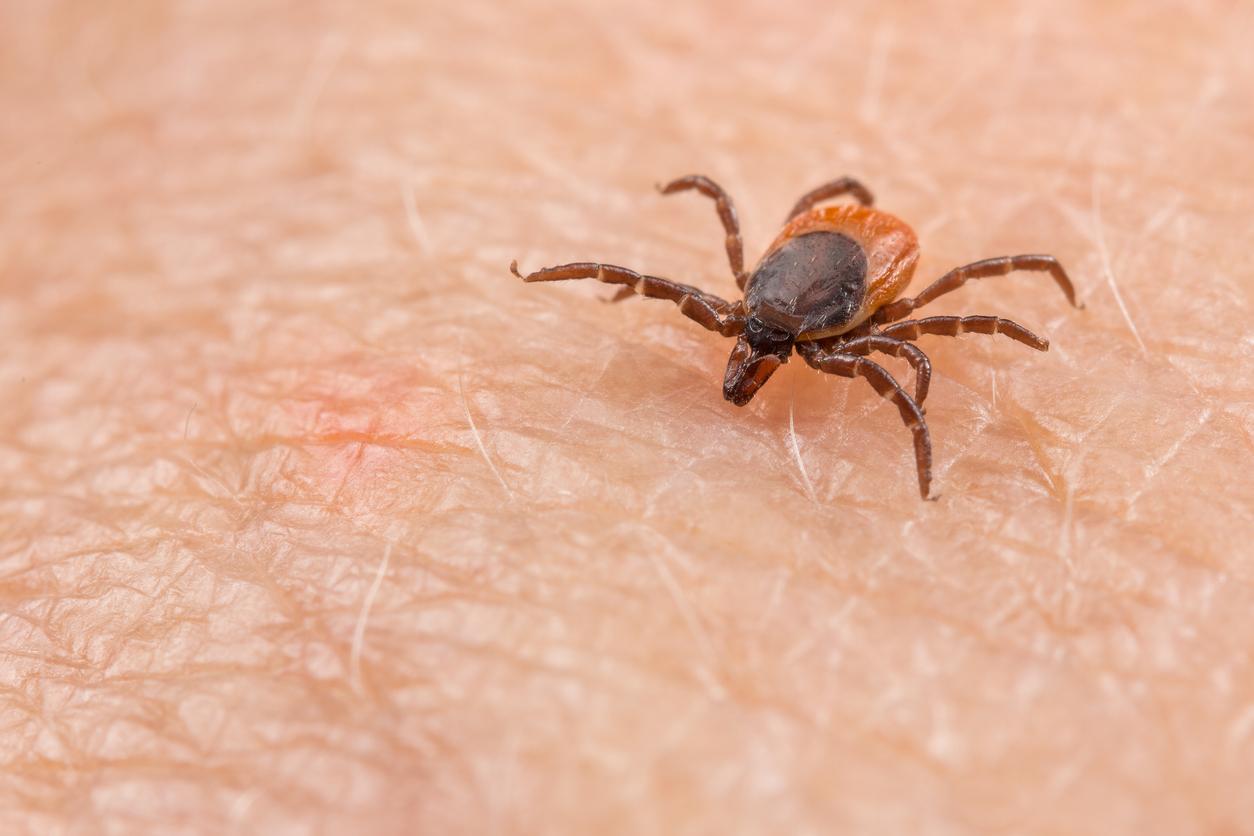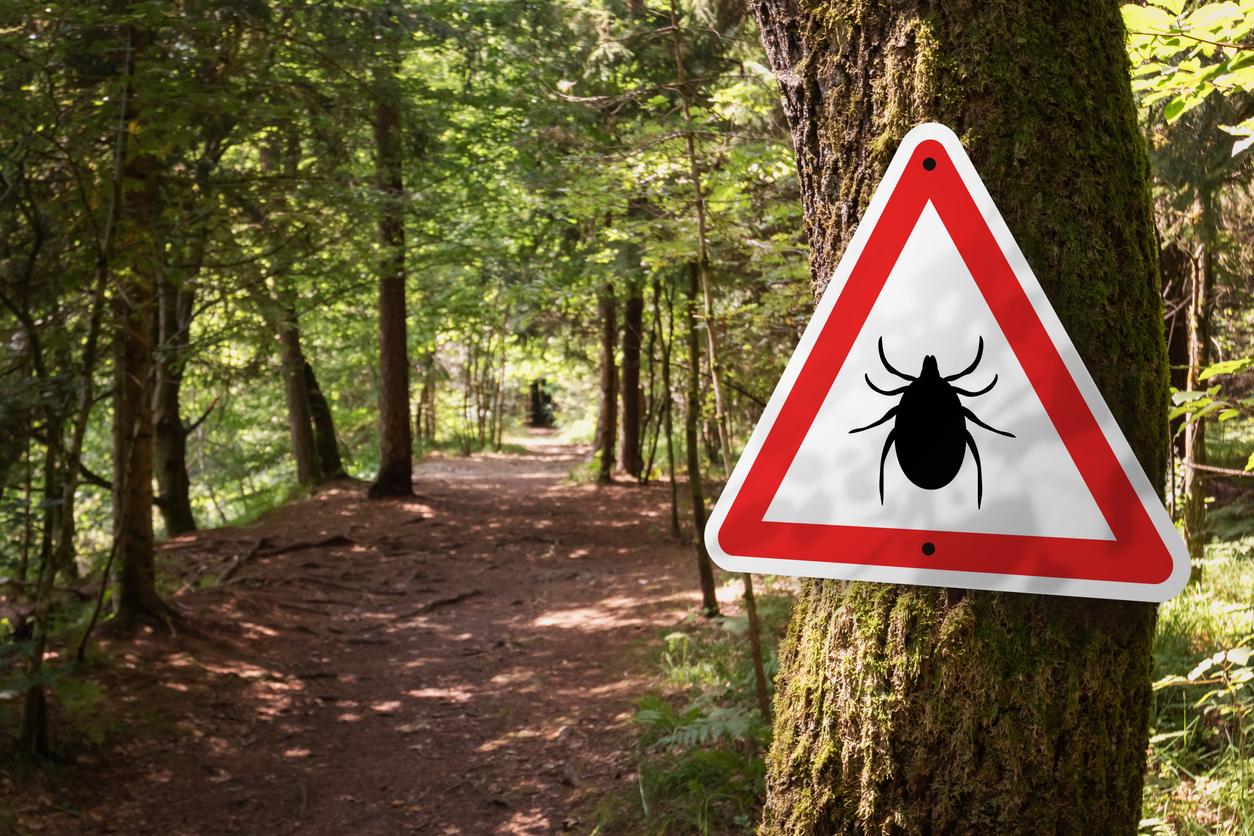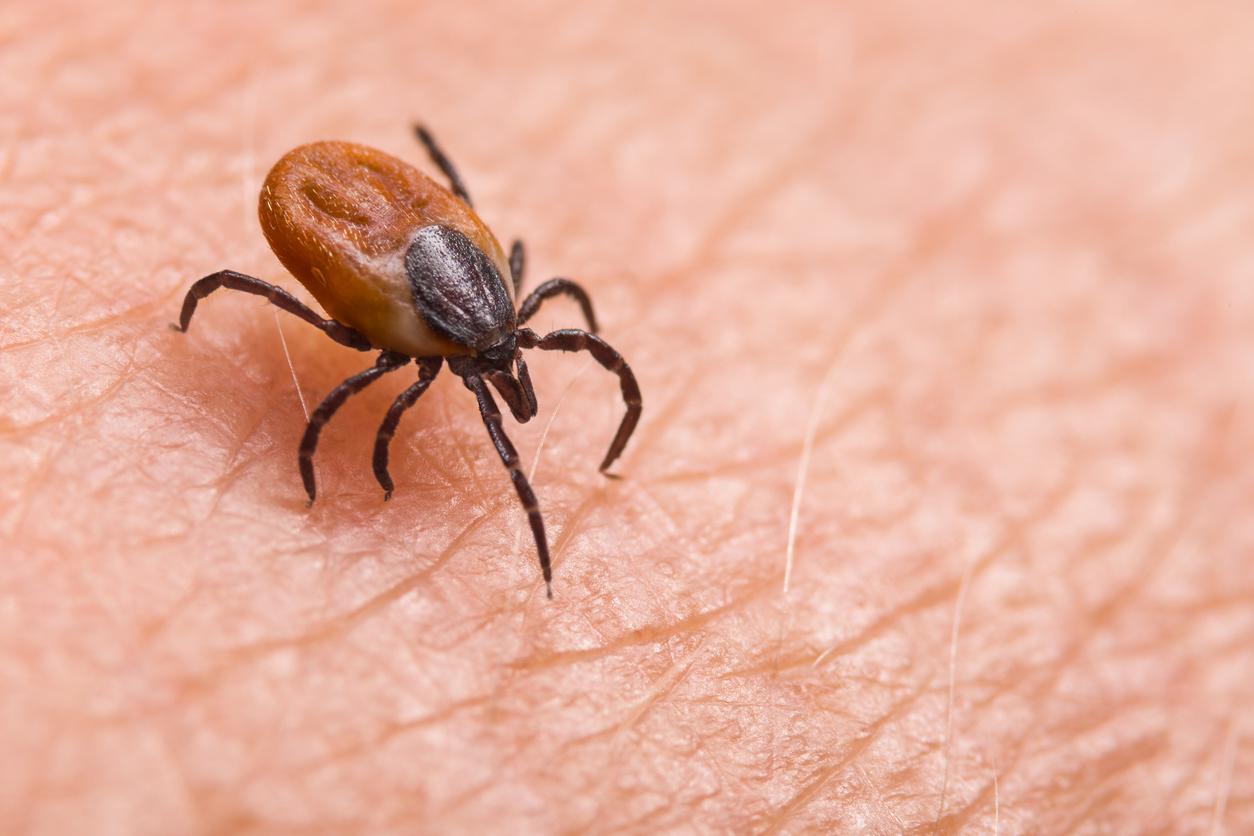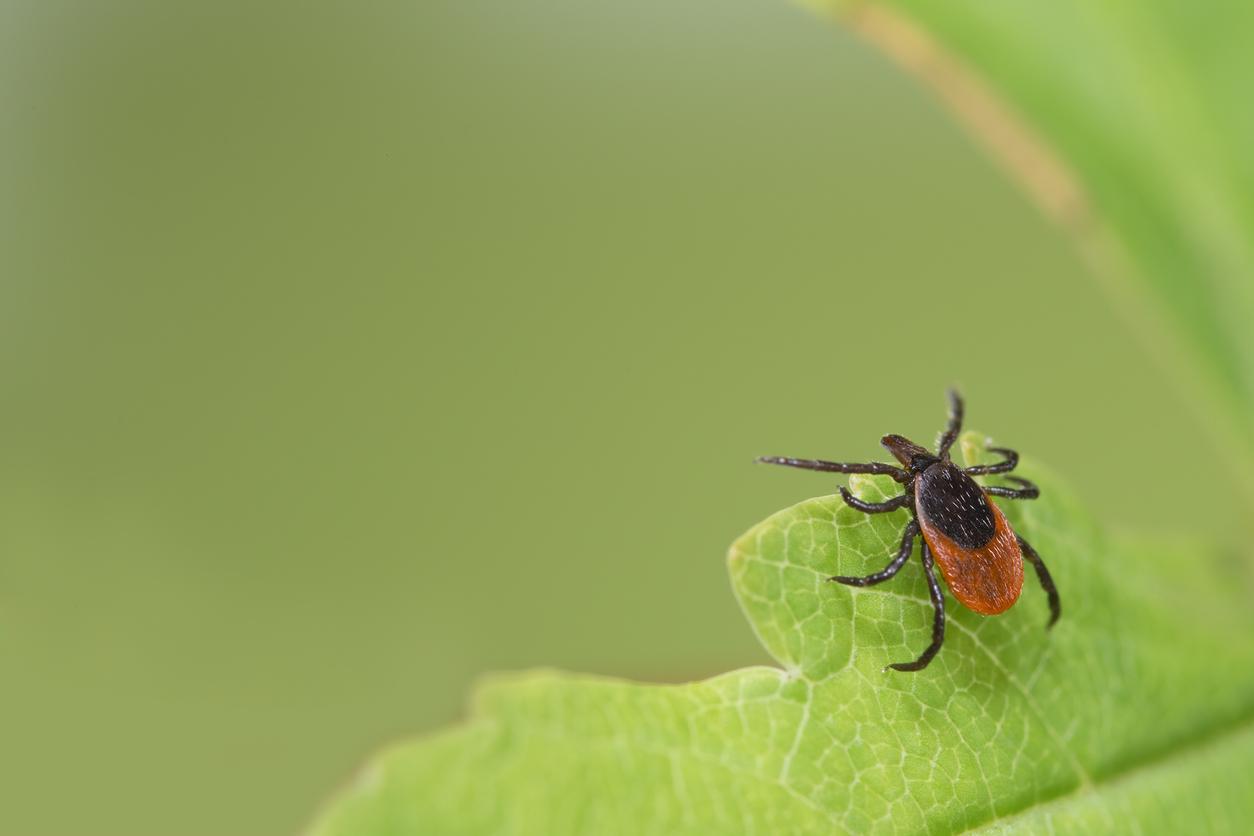Affluent white women are more likely to contract Lyme disease, according to a new British study. Girls and women aged 61 to 65 are also at higher risk.

While Public Health France and the Sentinel network announced in July “a significant increase” in the number of new cases of Lyme disease “diagnosed in general medicine” in France between 2017 and 2018, British researchers focused on the populations most at risk. According to their study published Thursday, August 15 in the journal BMC Public Health, wealthy white women are more likely to be affected by this bacterial infection that occurs after a tick bite (not all are carriers of the disease). Just like girls and women aged 61 to 65.
To reach these conclusions, researchers from the National Institute for Health Research in London analyzed 2,361 patients admitted to hospital for Lyme in England and Wales, between 1998 and 2015. They noticed that 60% of these patients were women. Among them, the most affected were six to ten years old or 61 to 65 years old. They were also able to observe that 95% of the people concerned were Caucasian. Finally, the southwest of England, mainly inhabited by wealthy people, recorded the highest number of cases during the period studied, note the researchers.
According to the latter, these results could be explained because white and affluent women are more likely to live near woods or fields infested with ticks and also more open to going to the doctor than men. As for the ages of the most affected populations, they could be justified because leisure activities, which are more developed among children and seniors, lead to greater exposure to ticks, with younger adults spending more time indoors, especially in the office. .
“Socio-cultural and behavioral” reasons
“The apparent association between ethnic origin and Lyme borreliosis is probably due to socio-cultural and behavioral reasons”, therefore analyze the researchers. “For example, living in an area where tick vectors of the disease are more likely to abound”, they detail, worrying about the increase in the number of cases in the United Kingdom.
In France, more than 67,000 cases were diagnosed in France in 2018, compared to 45,000 the year before, according to the Ministry of Health. “Climatic conditions favorable to the development of ticks and the awareness of health professionals to the diagnosis of this disease could explain this increase”, explained the ministry in a press release published a few weeks ago.
Thus, the government reiterated the importance of precautions to take before activities in nature: wear long, light-coloured clothing (in order to distinguish them better), a hat, tuck your pants into your socks, use repellent products recommended against ticks and inspect the whole family once home, including pets that are taken for walks.
A difficult disease to diagnose
Currently, Lyme disease is quite difficult to diagnose. It may appear within 30 days after the bite, first as a round, red patch that extends in a circle from the bite area. The lesion of the skin can be accompanied by muscle and joint pain, or fever. Treated early, it can disappear in a few weeks or a few months. In the meantime, the symptoms are multiple: joint pain, tremors and neurological disorders, memory loss, depression.
If the evolution towards the secondary phase is not systematic in the absence of treatment, this however worsens the prognosis. Thus, the infection can become chronic and spread from the skin to the whole body. It will then lead to serious complications that can affect several organs (joints, brain, heart, etc.). “Months to years after the infection may appear tertiary manifestations, joint, cutaneous, neurological, muscular, or cardiac”, recalls the Ministry of Health.

.















